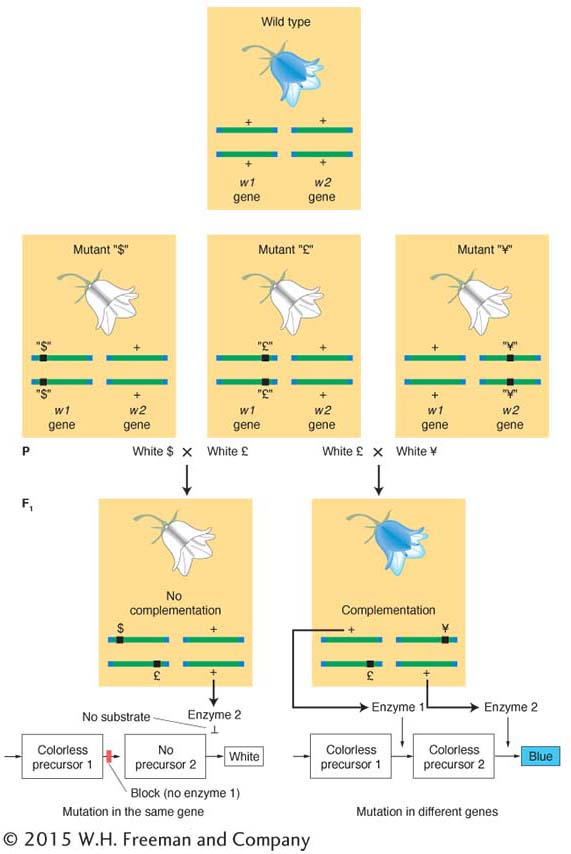The molecular basis of genetic complementation

Figure 6-12: Three phenotypically identical white harebell mutants— $, £, and ¥—are intercrossed. Mutations in the same gene (such as $ and £) cannot complement because the Fi has one gene with two mutant alleles. The pathway is blocked and the flowers are white. When the mutations are in different genes (such as £ and ¥), there is complementation by the wild- type alleles of each gene in the Fļ heterozygote. Pigment is synthesized and the flowers are blue. (What would you predict to be the result of crossing $ and ¥ ?)
[Leave] [Close]